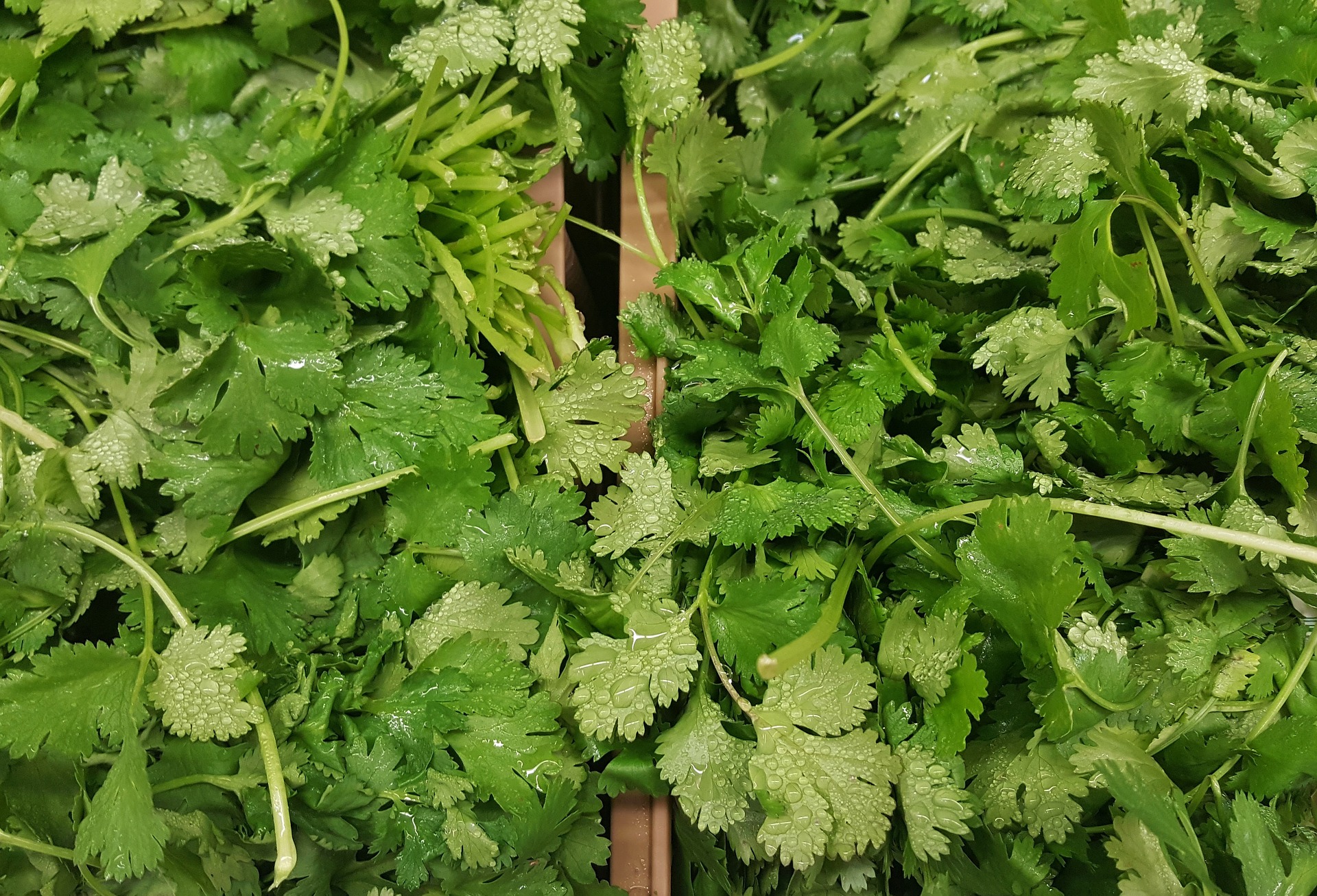Uniform water supply during the growing season significantly impacts the successful cultivation of parsley. During germination, optimal moisture in the sowing layer of the soil must be ensured; otherwise, germination will be difficult and uneven. The beginning of the root thickening phase is critical for water needs, so sufficient soil moisture must be provided at this time. If moisture is not provided by rainfall, parsley needs to be irrigated (20-30 mm).
The most commonly used method of irrigating parsley is sprinkler irrigation.
In this method, water is distributed over the soil surface in the form of natural rain.
Advantages of Sprinkler Irrigation:
- Can be used in various topographic conditions.
- Minimal or no preparatory work on the land is needed.
- Does not take up arable land.
- Does not reduce the use of mechanization.
- Allows for economical use of available water due to accurate dosing.
- The soil is less exposed to the deterioration of physical properties.
- Enables irrigation of newly sown fields and young plants.
- Allows the application of fertigation.
In sprinkler irrigation, the system draws water from a source, then pumps it through pipes, distributing it over the irrigated area in the form of natural rain through sprinklers.
The irrigation system can be portable, semi-stable, or stable.
In a portable system, all parts are movable, and the pipes are connected with quick-connect fittings. A semi-stable system has a fixed water intake device and main pipeline, while the sprinkler arms and sprinklers are portable. The main pipeline is usually placed underground, with only hydrants protruding to connect the sprinkler arms. In a stable system, all parts are fixed. The sprinklers are connected to a pipe network, usually installed underground.
Every sprinkler irrigation system consists of a water intake, a pipe network, sprinklers, and fittings. The water intake can be either gravitational or through a pump unit. In the pump unit water intake, water is drawn from the source and pumped through the pipe network to the sprinklers at the required pressure. The pump unit consists of a drive motor and pump, with centrifugal pumps being the most commonly used. It is essential to match the power of the drive motor with the pump’s requirements.
The pipe network delivers water from the source to the sprinklers. This network consists of the suction pipe, main pipeline, and sprinkler arms. The sprinkler arms have outlets at specific intervals for connecting the sprinklers.
Sprinklers play a crucial role in the sprinkler system. They spray (distribute) water over the soil surface in droplets. Given their critical role, they must function correctly and efficiently. Sprinklers can vary based on water pressure, throw range, water discharge rate, spray area, spray intensity, type and number of nozzles, drive mechanism, and spray method.
Choosing the right sprinklers is crucial for effective irrigation. For irrigating parsley and other vegetable crops, gentle sprinkling is ideal, so low-intensity, short-range sprinklers are best.
One of the most important features of sprinklers is uniformity in watering. Ideal watering can be disrupted by wind during irrigation. Generally, the most water falls near the sprinkler, with decreasing amounts towards the throw’s end. Therefore, sprinklers are appropriately spaced across the irrigated area to achieve more uniform watering.
Besides the sprinklers, it is vital to arrange the entire system optimally. The position of the water intake, main pipeline, and sprinkler arms can vary. The choice should consider the water source, topographic conditions, and the size and shape of the plots. Therefore, for each plot, natural, technical, technological, and economic factors should be considered before deciding on the placement of the system components.
In sprinkler irrigation, knowing the duration of watering from one sprinkler position is crucial. If irrigation lasts longer than necessary, it can lead to overwatering, which can cause several issues: deterioration of soil physical properties, nutrient leaching, erosion, and salinization.
In the case of shorter irrigation than required, the soil will not be saturated to the needed depth with water to the field capacity.
The irrigation dosage depends on the soil characteristics, crop, and the current soil moisture condition.
Proper water dosing is critical in irrigation practice.
Irrigation Dosage and Timing
The irrigation dosage is the amount of water applied in one irrigation (m3/ha or in mm). The dosage should wet the soil to the field capacity, meaning the irrigation dosage depends on the soil type. To determine the irrigation dosage, it is necessary to know the soil moisture before irrigation and the soil’s water properties. The difference between the field capacity and the current water content in the soil represents the irrigation dosage.
The timing of irrigation is the precise moment when the irrigation dosage is applied, which is a condition for successful and efficient irrigation. If the timing of irrigation is determined “by eye,” the irrigation is inefficient and can even be harmful.
To achieve the optimal timing of irrigation and determine the irrigation dosage, thus enabling efficient and economical water use, soil moisture meters are needed.













































